7 Types of Black Birds in New Hampshire (With Pictures)
Last Updated on
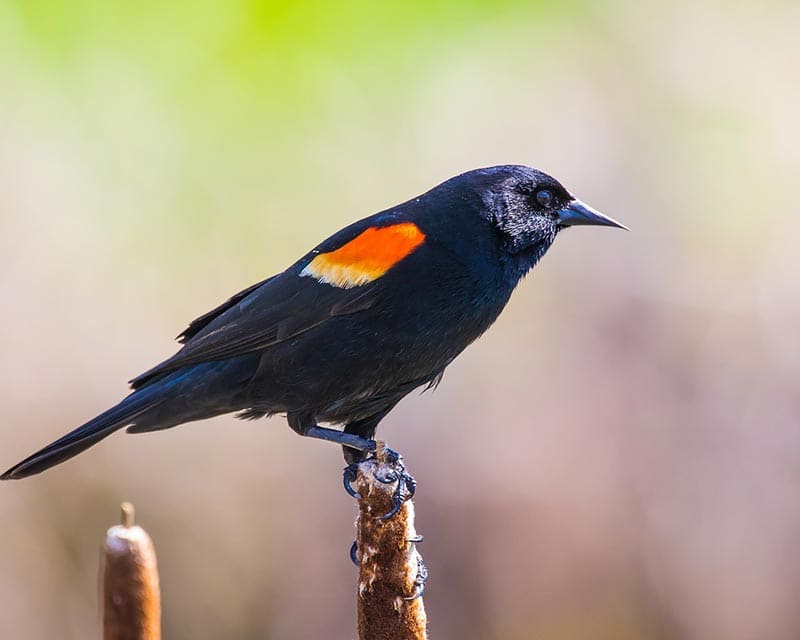
With so many birds recognizable for their bright, colorful plumage, it can be hard to identify a plain one. Black is one of the most common bird colors, and if you see a black bird, it can be hard to know just what you’re looking at. But some of the most common birds around New Hampshire are black, and knowing how to identify a few of these can bring you a long way.
Here are seven interesting bird species from New Hampshire that are black.

The 7 Types of Black Birds in New Hampshire
1. Brown-Headed Cowbird

| Size: | 7.5” Long |
| Features: | Stocky, thick-billed, brown head |
Brown-headed cowbirds are a small blackbird species that are often found in grassy areas, prairies, and the fringes of woodlands. The females are a dull brown all over, while males are black with a slightly lighter brown head. From a distance, the males may look black all over.
These birds are notable for their small size—less than eight inches long—and their build. They are chunky, rounded birds with stubby, conical bills.
2. European Starling

| Size: | 8.5” long |
| Features: | Black feathers with pale edges |
These starlings are an invasive species across all of North America, including New Hampshire. They are often found in large flocks and can be aggressive around feeders and other territories.
European starlings look similar regardless of sex, with black, slightly shiny or iridescent plumage and a short tail. They’re about the same size as a robin. They have long, slender beaks that are yellow or black. In the summer, they are black all over except for some white tips to their wing feathers. Their winter plumage includes white speckles all over.
3. Red-Winged Blackbird
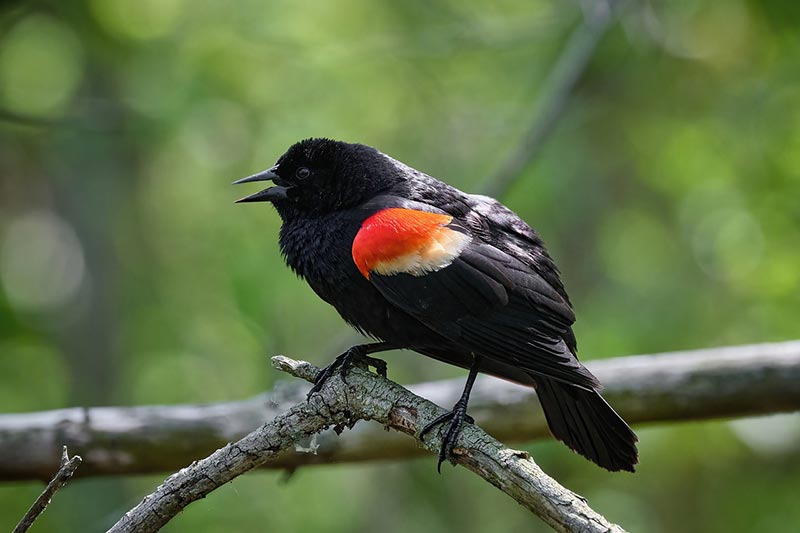
| Size: | 9” long |
| Features: | Red shoulder patches |
Males are distinctive with dark feathers, sharply pointed bills, and flashes of red on their shoulders. Females are dull brown with darker streaks. The red-winged blackbird is only found in most of New Hampshire during the breeding season, from spring through to mid-summer, although they do stay in some parts of southern New Hampshire year-round. While breeding, they mostly stay in wet, marshy areas. If they stay throughout the rest of the year, they’ll spread out into grassy areas or fields to look for food.
4. Common Grackle
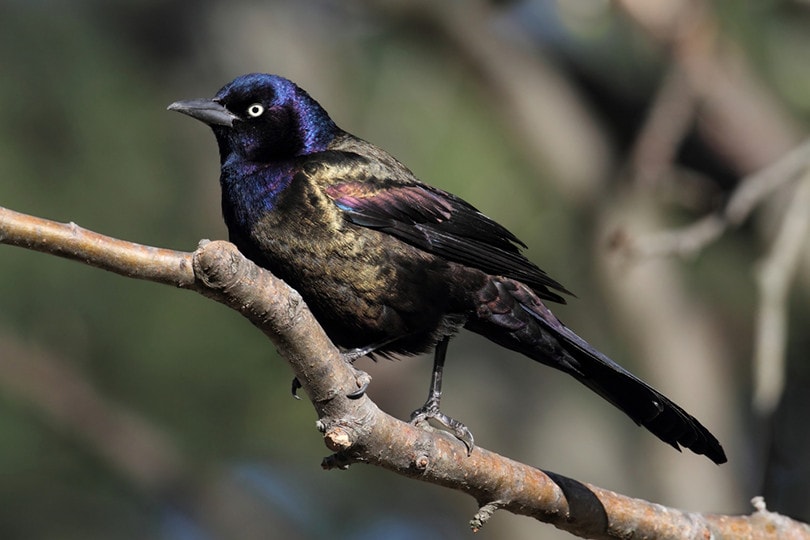
| Size: | 12” long |
| Features: | Long tail, large size |
The common grackle is a large blackbird that reaches up to a foot long, including its long black tail. They are black all over, but their heads might shimmer with bluish iridescence. They often gather in enormous flocks around food sources, including farmers’ crops. They also love to visit bird feeders, and a flock of grackles will often chase away the smaller songbirds. They’re hardy eaters that will eat everything from nuts and grains to frogs and mice.
5. American Crow

| Size: | 18” long |
| Features: | Black from bill to feet, straight beak |
American crows are some of the bigger birds you’ll see around New Hampshire, although they don’t quite measure up to the next birds on our list. Unlike most birds on this list, these ones really are black all over, with a jet black beak, dark eyes, shiny black feathers, and dark feet. You can tell them apart from their larger cousins, the ravens, due to their slightly smaller size and straight beak. They have a distinctive “caw” bird call and often travel in small flocks.
6. Pileated Woodpecker
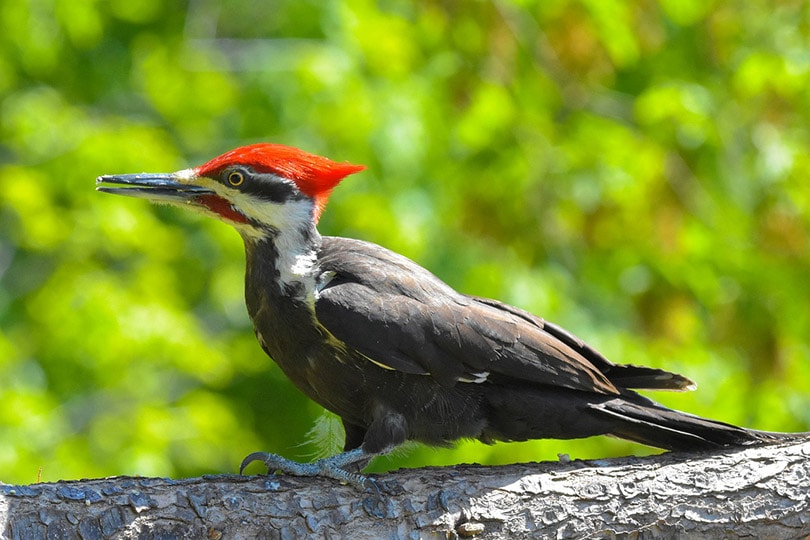
| Size: | 19” long |
| Features: | Red and white markings on face and chest |
The pileated woodpecker is one of the largest woodpeckers out there—over 18” from head to tail. They are mostly black, but they have bright red crests and white markings on their face and chest. Males also have a red stripe on their cheeks. They’re most common in mature forests, where they eat ants, beetles, and termites found in rotting trees. They do occasionally visit suet feeders, especially if you live in a wooded area.
7. Common Raven
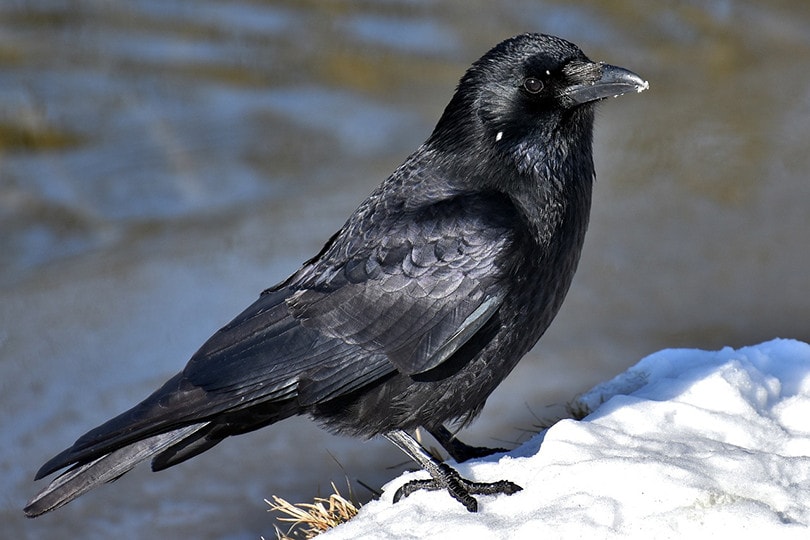
| Size: | 25” long |
| Features: | Large size, curved beak, black all over |
You’ll often see ravens circling overhead, soaring through the sky with barely a flap of the wings. These big birds are known for their cleverness and ability to mimic human speech, although their natural call is a hoarse croak. Like crows, they have dark beaks and feet, but ravens are much bigger, reaching around 25 inches in length. They have downward-curved beaks and fan-shaped tails. They also tend to spend time alone or in pairs—you’ll rarely (if ever) see a large group of ravens.

Final Thoughts
New Hampshire is full of beautiful birds of all colors and kinds. These seven black bird species are some of the most common and recognizable species around New Hampshire; if you remember them, you’ll likely get a chance to identify one someday. Whether you’re looking for birds in your backyard or deep in the wilderness, you’ll likely see more variety than you expect!
Featured Image Credit: Meister199, Pixabay
About the Author Chelsea Mortensen
Chelsea Flake Mortensen has a BA in English and Creative Writing from Brigham Young University. Chelsea is a writer with a passion for animals having grown up around everything from cats and birds to chameleons and fish. She now writes about a variety of topics.
Related Articles:
Monocular vs Telescope: Differences Explained (With Pictures)
10 Types of Hummingbirds in Arkansas (With Pictures)
8 Types of Hummingbirds in Nebraska (With Pictures)
5 Types of Hummingbirds in Idaho (With Pictures)
3 Types of Hummingbirds in Mississippi (With Pictures)
8 Types of Hummingbirds in Kansas (With Pictures)
5 Types of Hummingbirds in West Virginia (With Pictures)
5 Types of Hummingbirds in Ohio (With Pictures)
